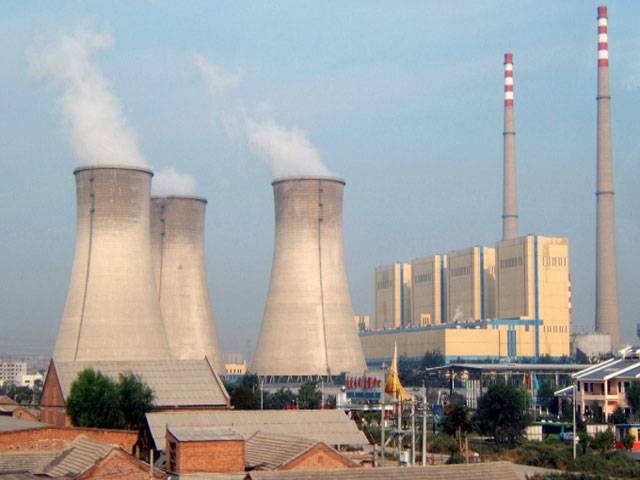AFP
NEW DELHI
India, the world’s third biggest carbon-emitting country, said Friday it was “confident” it could cut its emissions intensity by 35 percent by 2030 in the run-up to a key conference in Paris later this year. The environment minister announced India’s climate pledges after the government submitted to the UN a new plan for tackling climate change, ahead of the COP21 meeting in November that will seek to forge a global agreement on curbing Earth-warming emissions. “We are confident we will achieve the 35 percent (target) by 2030,” Prakash Javadekar said, adding: “it is a huge jump for India, therefore it is a very ambitious target”. “The developed world has polluted the Earth and we are suffering. Still, we want to become part of the solution and give results,” he said. India made the pledge to cut emissions intensity - the amount of pollution per dollar of GDP - as part of its Intended Nationally Determined Contributions or INDCs, in a document published on a UN website early Friday. It also committed to generating 40 percent of its electricity from renewable sources by the end of 2030 “with the help of transfer of technology and low cost international finance”. The new goals would take India’s capacity for renewable energy by 2030 to more than double the 175,000 megawatts currently targeted.
The government estimated at least $2.5 trillion would be required to achieve India’s climate change goals, which include increasing forest cover, between now and 2030. The environment minister’s announcement came as Prime Minister Narendra Modi launched a solar-powered district court building in the insurgency-wracked and impoverished central state of Jharkhand. “Despite huge developmental challenges, India has put forward a climate action plan that is far superior to ones proposed by the US and EU,” Sandeep Chachra, ActionAid India’s Executive Director, said. The Climate Group, an environmental NGO, also welcomed the plan. “The fact that India is a developing economy should not be seen as a constraint but as an opportunity to demonstrate to others how ambitious growth can be achieved through a clean industrial revolution and building a strong low carbon economy,” Krishnan Pallassana, the group’s India director, said.
But New Delhi stressed in its UN submission that coal will “continue to dominate power generation in future” to help end crippling blackouts and bring power to more than 300 million Indians currently living without electricity. However, environmental campaigners criticised the move to continue coal use as hurting green efforts.
“India’s continued commitment to expand coal power capacity is baffling. Further expansion of coal power will hamper India’s development prospects,” said Pujarini Sen, a senior Greenpeace India campaigner. India has resisted pledging targets as big as those of rival China, which vowed in June to reduce its carbon intensity by 60 to 65 percent over 15 years, and also bring its absolute emissions to a peak by “around 2030”.
Modi came under pressure over the issue during his trip to the US for the recent UN General Assembly, with US President Barack Obama stressing that “India’s leadership in this upcoming conference will set the tone not just for today but for decades to come”. Asia’s third-largest economy fears committing to a peaking year would compromise efforts to boost living standards in a country where more than a quarter of its 1.2 billion people are poor.
Developing countries want rich nations to bear a bigger share of the burden for curbing emissions, which requires a costly shift from cheap fossil fuels to less polluting energy sources, and accuse them of hypocrisy in heaping demands on poorer nations. In Paris, nations will aim to seal a pact to cap temperature rises at no more than two degrees Celsius (3.6 Fahrenheit) from pre-industrial times. The level is still expected to cause droughts and disasters but is considered by scientists to be comparatively manageable.
Friday, April 26, 2024
India ‘confident’ it can meet ambitious 2030 energy targets

2:23 PM | April 24, 2024
Minister directs SSIC to improve recovery
April 26, 2024
Life-saving medicines shortage hit many cities
April 26, 2024
Petrol, diesel prices set to fall in Pakistan
April 26, 2024
Elephant Madhubala to be shifted to Safari Park next month
April 26, 2024
Economic Challenges
April 26, 2024
No Compromise
April 26, 2024
Strength and Solidarity
April 26, 2024
Musk vs Australia
April 25, 2024
Reforming Rehab
April 25, 2024
Photon power
April 26, 2024
Justice prevails
April 26, 2024
Ending animal suffering
April 25, 2024
AI governance
April 25, 2024
AI concerns
April 25, 2024
ePaper - Nawaiwaqt
Advertisement
Nawaiwaqt Group | Copyright © 2024





